Ajax discovery: more about the latest family of British combat vehicles. Part of 2
New armored vehicle Ajax British Army
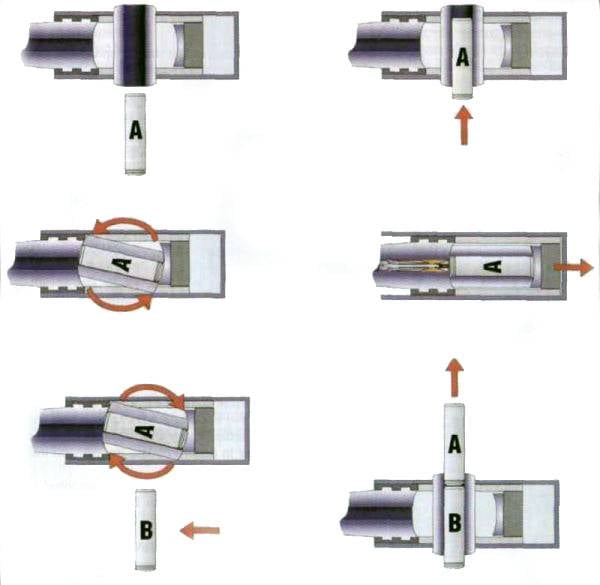
How it works 40-mm automatic gun CTAS
For the 40-mm CTAS automatic cannon with telescopic ammunition, seven types of STA ammunition with capsule ignition have been developed or are under development. The qualification of ammunition by the French Armaments Office and the British Ministry of Defense was carried out in stages. At the first stage of the Wave 1A, an armor-piercing feathered sabot tracer (BOPS-T) and a practical tracer were qualified. The first consists of a pallet assembly with a leading part (230 grams) and a sub-equipment — a feathered arrow-shaped core (320 grams). The projectile assembly is shot at a speed of more than 1500 m / s and is able to penetrate more than 140 mm rolled uniform armor at a distance of 1500 meters. The second projectile has an initial speed of 1000 m / s and according to ballistics it corresponds to the not yet qualified universal high-explosive fragmentation projectiles (anti-personnel / for defeating the material part).
In accordance with the Wave IB stage, a universal high-explosive fragmentation projectile with a tracer head fuse (GPR-PD-T) will be qualified, and at the Wave 2 stage, a universal air blast tracer (GPR-AB-T) and a practical tracer with a reduced range (TPRR- T). The GPR-PD-T and GPR-AB-T shells weighing 980 grams, in fact, are the same shell, but different fuses. The first one simply detonates instantly when it meets a target, and the second has three detonation modes: shock, shock with a delay and air blast. Both projectiles are capable of penetrating 15 mm of rolled armor or a concrete wall 210 mm thick in impact mode, the second projectile in air blasting mode creates a lethal area of more than 125 m2. TPRR-T is lighter (730 grams) and faster (> 1000 m / s), but has reduced wear (less propellant mass), has a shorter range of 6500 meters; this cheaper practical ballistic projectile up to a distance of 1500 meters corresponds to the GPR-PD-T and GPR-AB-T projectiles. Reducing the range is achieved through a combination of less mass (hence, greater aerodynamic drag) and rotation, the destabilizing system is represented by several cutouts extending from the nose along most of the hull (photo below, right-most projectile).
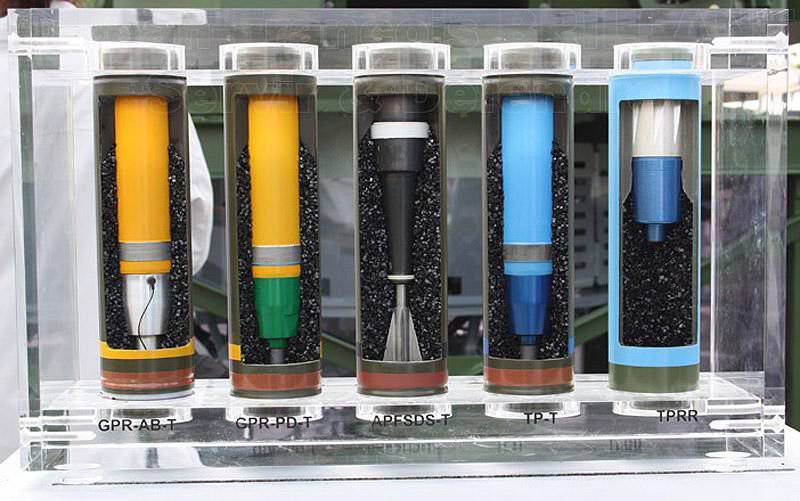
And, finally, another type promoted on the market is an air explosive AZV-T projectile, a tracer, to combat air targets, it has a mass of 1400 grams and a low initial velocity (900 m / s). The projectile is designed to combat UAVs, helicopters and slow-flying aircraft. The projectile fuse has two modes: shock and delayed action (the fuse variant installed in GPR-AB-T); This cassette projectile is equipped with a small expelling charge and 200 cylindrical tungsten alloy elements. The striking elements work on the same principle as in the AHEAD (Advanced Hit Efficiency and Destruction - Projectile), developed by Oerlikon, released before the target and disintegrated due to a combination of charge and rotation. They form an expanding cone, which hits the target due to a combination of speed (the initial velocity of the elements is close to the velocity of the projectile in the explosion) and the density of the cloud.
Another type, the development status of which is still unknown, is a practical tracer, according to ballistics, the corresponding BOPS.
Thales ORION main sighting system for the Ajax family of machines
Systems, sensors, equipment of new machines
The Ajax variant, described as the future eyes and ears of the British army, uses a number of advanced technologies that made it possible to obtain an ISTAR deployable all-weather platform (information gathering, surveillance, target designation and reconnaissance).
Reporting at the conference "Situation awareness of promising armored vehicles" in March 2016, Lieutenant Colonel Mark Cornell from the British Department of Defense said that after Operation "Herrick" the military expects global connectivity, data transfer services and visual aids, seamless data exchange between platforms , as well as intuitive and simple tactical communication equipment.
The Ajax family reflects the adaptation of an information-centric approach to the modernization of command, control and communications systems when the platform is at the center of information collection and distribution, allowing you to quickly distribute, process and present data.
Integrated into the Ajax armored vehicle, the functional system uses open standards and supports a scalable architecture, the introduction of which increases flexibility and interoperability and saves money in future upgrades and changes to the combat mission of the vehicle.
The concept of the Ajax platform is consistent with the common (standard) architecture (GVA) for vehicles of the British defense standard 23-09, which promotes a common approach to vehicle configuration and defines standards for vehicle design and development. GVA is based on agreed open standards that underpin the standards of the electronic architecture, human-machine interfaces, standards for the formation and transmission of video data, standards for power systems, standards for mechanical systems, and systems for monitoring the condition and use of systems.
The modular, open-source Ajax architecture provides abbreviated update cycles in computer, sensory, and electronic systems, allowing you to improve the continuity of new systems and the regular spiral development of capabilities as new technologies become available. The modularity of the Ajax platform allows you to quickly change its configuration as new and symmetric and asymmetric threats emerge and develop.
The architecture includes a central data bus that transmits video and audio data and messages, while the electronic architecture allows you to combine input and output information from various equipment, such as sensors, actuators, crew displays, communication systems and internal / external interconnect devices.
Following the issuance of the initial contract, General Dynamics entered into an agreement with Thales for the supply of sighting systems and situational awareness systems.
The main aiming system installed on the Ajax machine is the Thales ORION stabilized independent panoramic sight, which provides the vehicle commander with round-robin observation and target identification, regardless of the orientation of the turret. The stabilized system allows you to lead and capture targets in motion.
The ORION system includes a Catherine-MP (Mega-Pixel) thermal imager from Thales Optronics, equipped with a Gen 3 microbolometer. Catherine-MP can be selected with a mid-wave or long-wave receiver. The receiver in the mid-IR region of the spectrum is sensitive in the 3-5 μm spectral range and has a pixel pitch of 15 μm and an 640 x 512 matrix format, and the receiver in the long-wave (near-infrared) IR region of the spectrum operates in the 8-12 μm range and has a pixel pitch 20 um.
ORION also includes an eye-safe laser range finder, two high-resolution color cameras, and a gigabit Ethernet standard interface (GigE, 1 Gbit / s local area network) for data exchange and communication. The system is compatible with the British GVA standard and uses open standards for transmitting digital video, connecting subsystems, their interoperability, and transcoding the video stream.
The Ajax armored vehicle will have a Saab Barracuda mobile camouflage system, since from the very beginning it was designed with the installation of this system in mind.
The Thales kit includes a two-axis stabilized modular sight DNGST3. The sight DNGST3 provides detection and capture of targets in motion day and night. Its modularity lies in the fact that it is possible to choose for it either a medium wave or a long wave infrared imager plus a high resolution sensor with either a narrow or wide field of view. DNGST3 also includes a laser range finder and has GigE and video interfaces for exchanging data with a fire control system (FCS).
The contract with Thales includes the supply of local video surveillance cameras, which are used for round-the-clock surveillance and identification of threats in the immediate vicinity of the vehicle through a combination of uncooled thermal imagers and day cameras.
On the Ajax platform, surveillance systems from the British company Kent Periscopes are installed. The system includes periscopic prism instruments and a commander's auxiliary sight, designed specifically for installation in the Ajax tower. On the case of the Ajax platform, there are also two periscopes, including those on the hatch of the driver.
Esterline delivers Codis TX hardened displays used to display platform parameter information and data from sensor systems. Codis touchscreen displays are designed to work in demanding conditions and are compatible with the NVIS standard (the ability to work with night vision devices), have LED backlighting for working in bright lighting and DVI, RGB, USB and serial interfaces. The package includes a display for the Codis TX-335S turret, used to display information about the parameters of the gun control system, system metadata and logistic information. The Codis TX-321S driver's three-part display is used to represent the front view in the 120 ° sector, as well as display images from the front and rear cameras with the choice of day or night channel. The heart of the system is the Codis VPU-101 video processing unit, which is used to process and transcode input information from various Ajax platform systems and distribute it across displays and data storage servers.
The Ajax touch kit includes Smiths Detection detectors designed to warn the crew of a chemical attack or the presence of resistant chemicals. LCD 3.3 does not require calibration or routine maintenance, it identifies poisonous substances of general toxicity, nerve agents, skin blisters, asphyxiation, and a user-selected set of toxic industrial chemicals. LCD 3.3 has an automatic input module that allows you to work with the detectors of the LCD system in remote or automatic mode. The power supply system of the machine ensures the operation of the LCD 3.3. The system is suitable for use both inside and outside the platform, and is certified for compliance with the safety requirements of environmental standards MIL-STD-810G, MIL-STD-461F and MIL-STD-1275.
The Ajax machine is equipped with a protection complex from Elbit Systems, which includes laser warning receivers, missile attack warning sensors and an infrared interference transmitter. The E-LAWS laser irradiation warning system detects, classifies, and localizes a laser beam source, including range finders, target indicators, and IR illuminator sources. The stated spectral range of the system varies from 0,5 to 1,6 microns. The structure of E-LAWS includes a sensor mounted on the roof of the tower to provide all-coverage. Decisions in the field of vitality also include a system to counter the infrared means VIRCM. The low-visibility VIRCM system provides protection against various missiles with semi-automatic guidance systems along the line of sight.
Multispectral smoke screen producers, mounted on the Ajax tower, are sent and shot automatically, creating a smoke screen in the visible and infrared spectra and allowing the car to secretly perform a maneuver.
The next-generation tactical information and control system MORPHEUS, designed to replace the outdated Bowman C systems from BAT and BISA, is also integrated into the Ajax platform. MORPHEUS is part of the MODAF (MoD Architecture Framework), the so-called Ministry of Defense framework, designed for defense planning and finding commercial solutions in the field of mobile communications and data processing that can be used for military tasks.
MORPHEUS provides an extensible, modular, open architecture that allows for more extensive use of ready-made commercial and military components with automatic and manual configuration for low-cost technology upgrades. In addition, work is under way to ensure that, with the help of the MORPHEUS system, the dismounted soldiers are provided with the capabilities of an onboard situational awareness system.
Kongsberg has signed a contract with General Dynamics for the delivery of the Kongsberg PROTECTOR remotely controlled combat module (SDM). This SDS can accept small and medium-caliber weapons and is suitable for installation on all versions of the platform. When installed on the Ajax variant, it is installed instead of the ORION main sight.
In the summer of 2016, GDLS-UK and Lockheed Martin UK, with the support of CTAI, conducted complex combat shooting from the Kongsberg PROTECTOR DBMS. For these tests, the Ares version of the Ajax family was taken; Shooting was conducted from the universal and heavy machine guns, grenade launchers and smoke grenade launchers.
The level of basic armor of the Ajax corps, although it was not announced, but presumably not inferior to the level of defense of the tower, but, most likely, exceeds it. The internal layout of the vehicle (both in ASCOD and Ajax; recall that Ajax is based on the ASCOD platform) means that the power unit located in front and the fuel tanks installed on the sides provide additional protection for some crew members against armor-piercing and cumulative projectiles . The Ajax machine's splinterproof baffles are the same as on the ASCOD platform, which reduces the angle of the fragments in case of piercing armor.
Judging by the available photo and video frames, the Ajax platform is equipped with wide removable armor elements / panels, which in the basic configuration cover the case from its roof to the top of the side panels. In order to increase protection, these panels can be extended, as well as the side screens, to the axis of the wheels. These panels can be filled with various security systems, for example, composite armor, spaced armor, perforated screens, non-explosive dynamic protection, electrical armor, or a combination of both. For constructive reasons, the installation of dynamic protection blocks, apparently, is not provided.
About ASCOD and Ajax mine protection almost nothing is known, although for the first of these platforms the level of protection is stated to be high, very likely not less than 3 Level (8-kg mine under any part of the hull or tracks), but rather 4 Level (as 3 Level only mine weighing 10 kg). The level of protection against IEDs (high-explosive, fragmentation and “shock core” type) is unknown.
The new solution aimed at increasing the survivability of the Ajax platform was the integration of a special mobile camouflage system Saab Barracuda MCS (mobile camouflage system), which buyers have already become Canada, Germany, the Netherlands. While creating the MCS designed for installation on Ajax platforms, the same basic technologies were used as in other similar systems, it is specially adapted to the requirements of the British army. “Each operator can determine which requirements he really considers important, therefore systems of different armies differ in configuration. There are also differences in the generations of camouflage systems, because the development of materials that we can use in our systems is constantly underway, because we strive to get the best performance compared to the previous generation. The system is developing depending on the direction of technology development, ”said Mr. Alund, a representative of Saab Barracuda, in one of last year’s interviews.
The configuration developed for Ajax is aimed at complying with the doctrine of the British army - where the machine will be deployed and the threats it will face. Alund added that “first of all, a forest configuration should be installed, but at least there are two more configurations for this machine aimed at countering possible threats”.
Alound noted that after asymmetrical warfare, similar to those that were conducted in Afghanistan and Iraq, the British army shifted its focus to conflicts with an equal rival and the MCS system for the Ajax platform is aimed at this. “The configuration we developed for Ajax is designed to deal with the most complex threats. Therefore, it will give Ajax a very good chance to cope with the threat of any level ... This is by far the most perfect system that we have created. ”
MCS camouflage provides multispectral protection in the visible, thermal, infrared and radio frequency spectra. “The system of series-connected panels consists of several layers of material that are processed or coated with various paints, pigments and coatings that work well in their parts of the electromagnetic spectrum,” explained Alund.
On the original platform ASCOD installed torsion bar suspension. However, the Ajax project was finalized; a new suspension system was proposed for it, combining torsion bars and hydraulic shock absorbers to improve ride quality and stability of the weapon system when driving over rough terrain. Also, according to the results of the contest, the British company Cook Defense Systems received a contract for the supply of tracks for the new platform.
On the Ajax family of machines, a compact power unit is installed, consisting of a diesel engine MTU V8 199ТЕ21 with an 600 kW power, combined with an automatic transmission Renk 2S6B. MTU, part of Rolls-Royce Power Systems, was awarded the Ajax contract in May 2015 of the year to supply GDUK with 2016 to 2022 year 589 engines totaling 80 million euros. This engine is a further development of the MTU V8 199 TE20 530 kW model currently manufactured for the Boxer MRAV of ARTEC (a joint venture of Krauss-Maffei Wegmann GmbH, Rheinmetall MAN Military Vehicles GmbH and Rheinmetall MAN Military Vehicles Nederland BV). Other engines of the MTU 199 series are installed on Austrian ULAN and Spanish Pizarro cars, which are also based on the ASCOD chassis. The 199 series engine, in turn, is based on the engine for a Mercedes-Benz OM 500 truck adapted by MTU for military use. On the Ajax platforms, a modified air intake system and a two-stage air filter with pulse cleaning are installed.
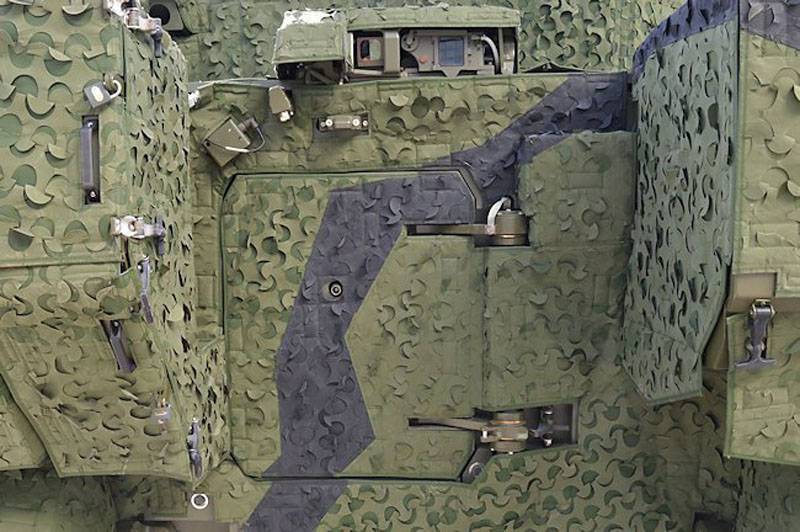
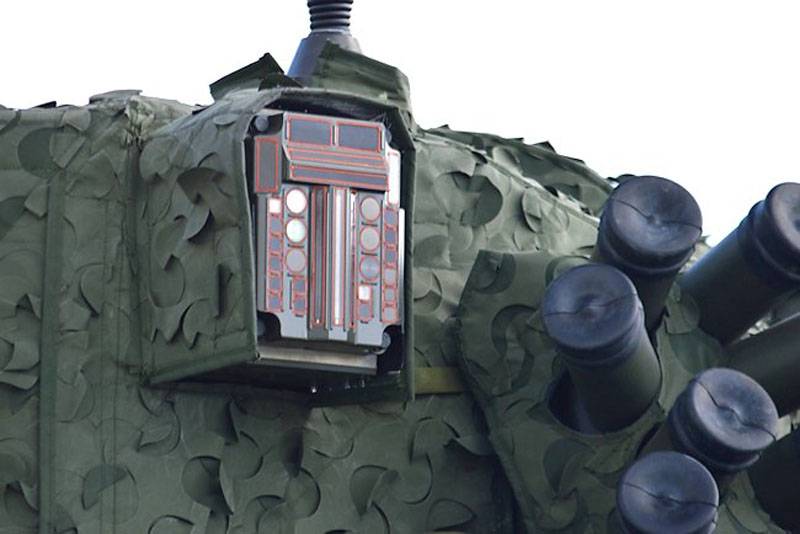
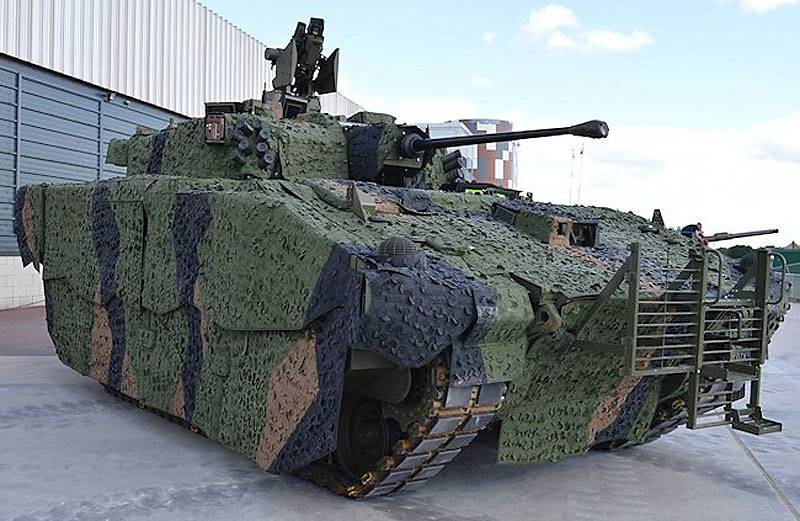
Ajax will be the first platform for the British army to be powered by MTU, despite the fact that, historically, it has chosen local suppliers, Jaguar and Perkins (currently Caterpillar). In the case of additional developments and purchases in the field of armored vehicles, including the planned Mechanized Infantry Vehicle (MIV) 8x8 armored personnel carrier, MTU will bite off another piece of the market by saving on unification if the MIV platform is selected and the 199 series engine is installed on it.
In the Ajax project, the absence of a large-caliber gun mount is noticeable, although previously something similar had to be implemented in the SCOUT SV Direct Fire variant, on which it was planned to install an 120-mm smooth-bore gun. The Ajax family has only one option with more or less good abilities to combat armored vehicles. This is actually the Ajax version itself, armed with an 40-mm cannon, plus the dismounting calculations of the Javelin ATGM system to help it, so an ATGM launcher installed on the machine would be highly desirable.
One solution could rely on the development of General Dynamics Land Systems to meet the needs of the United States in a new lightweight tankcurrently known as Mobile Protected Firepower (MPF).
At the AUSA 2016 conference in Washington, the company showed the Griffin demonstration platform: ASCHO-2 chassis based on the Ajax project with an installed lightweight triple tower based on the IVI1A2 SEPv2 tank tower. On this demo, the 120-mm XM36С smooth-bore gun, which is a modified version of the М256 gun currently standing on all М1 Abrams series tanks, was installed.
Such a machine will fit well into the assault brigade, since it will have a more effective gun (compared to the L30A1 rifled gun of the Challenger 2 tank) on the chassis of the medium weight category, which will have a good level of uniformity with the Ajax fleet.
In the context of the concept of an adaptable and deployable assault brigade, such a platform can give this formation the necessary full-fledged firepower.
Another highly desirable development could be the installation of an ATGM, either as an additional weapon system on an existing vehicle, such as Ajax, or on a new specialized platform, as planned for the FRES SV FR (O) variant.
A good example is Germany, which successfully integrated the Israeli company Rafae Spike-LR rocket by installing a new launcher at the later stages of development, despite the fact that this was not the initial requirement. Such an additional system will significantly enhance the combat capabilities of the platform, for which the British army would be very grateful.
The first part of the article:
Ajax discovery: more about the latest family of British combat vehicles. Part of 1
Materials used:
www.gov.uk
www.thinkdefence.co.uk
www.thalesgroup.com
www.lockheedmartin.com
www.gdls.com
www.baesystems.com
www.saabgroup.com
www.wikipedia.org
en.wikipedia.org
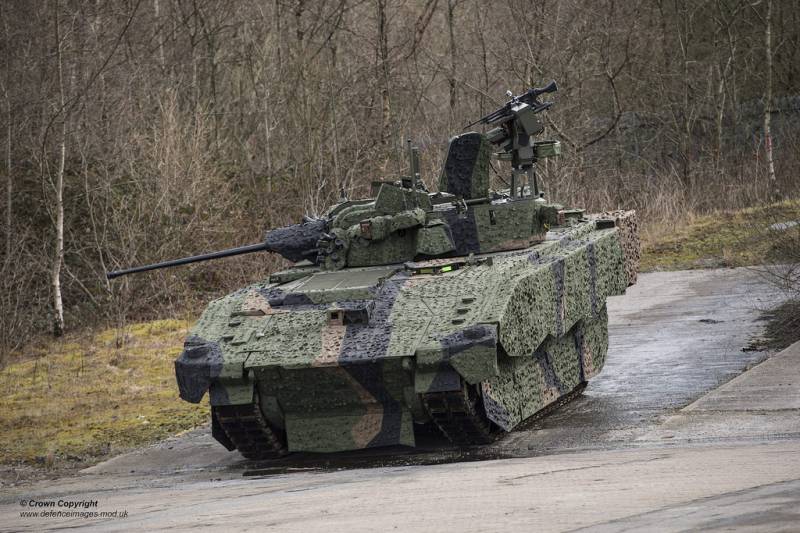
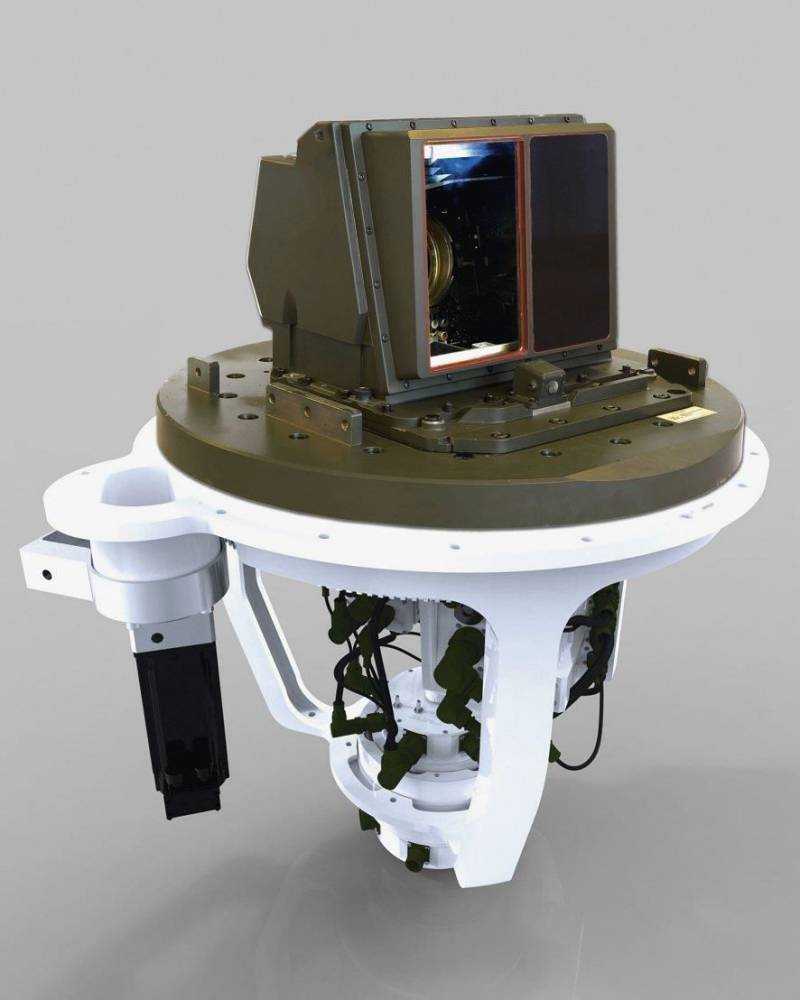
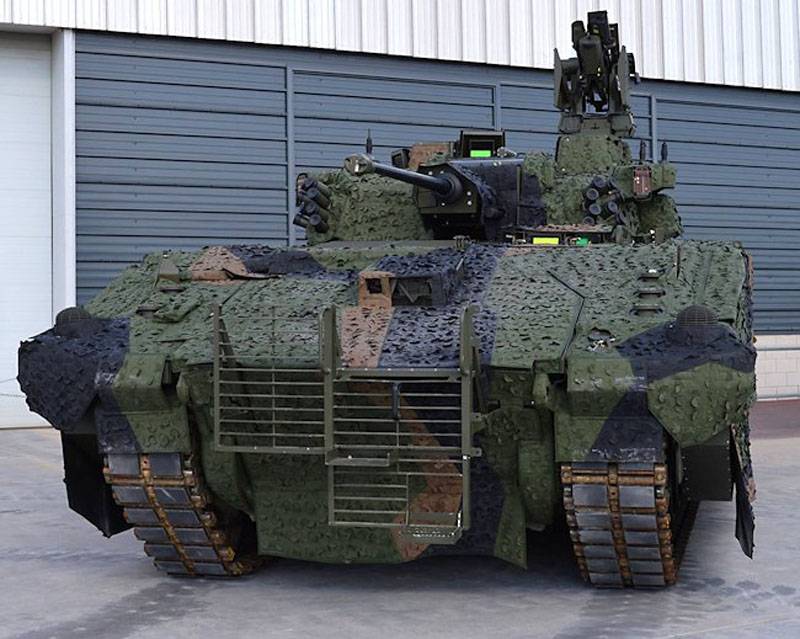
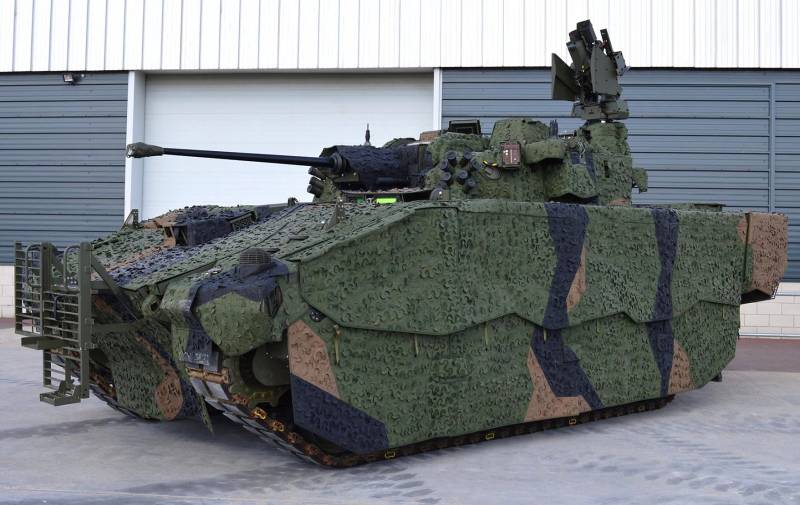
Information